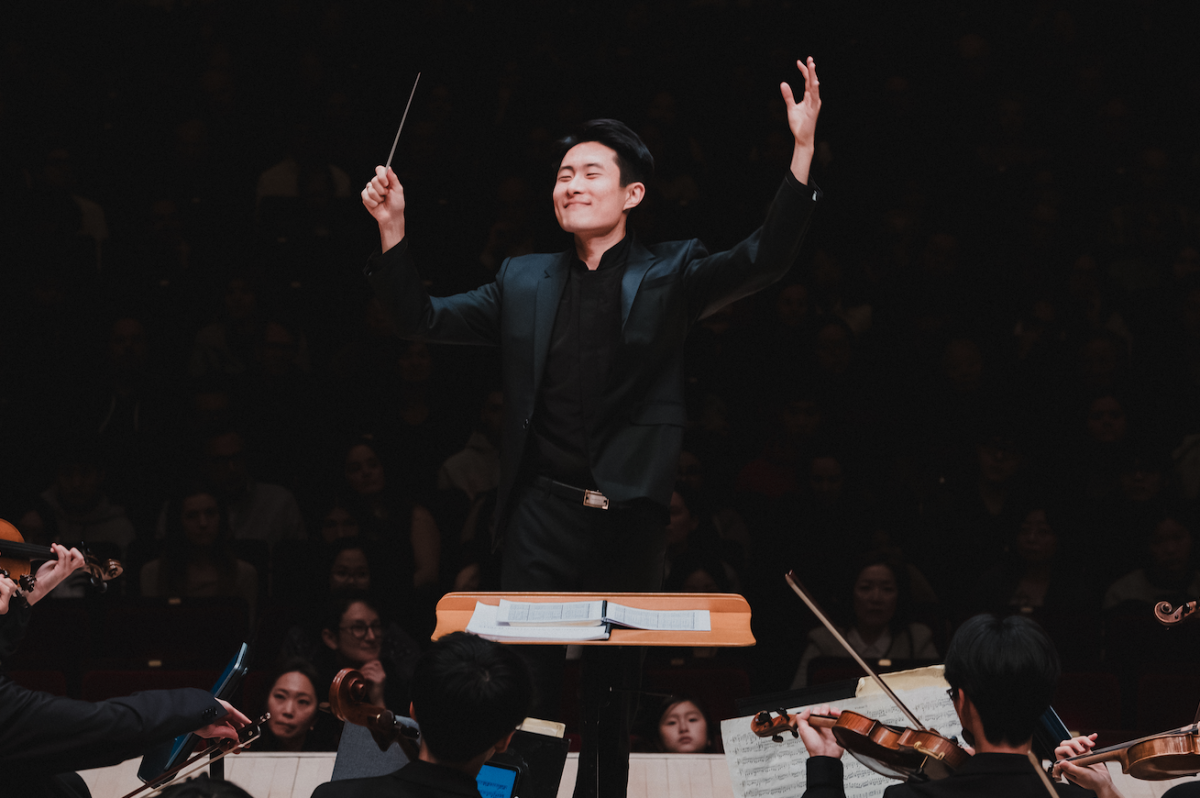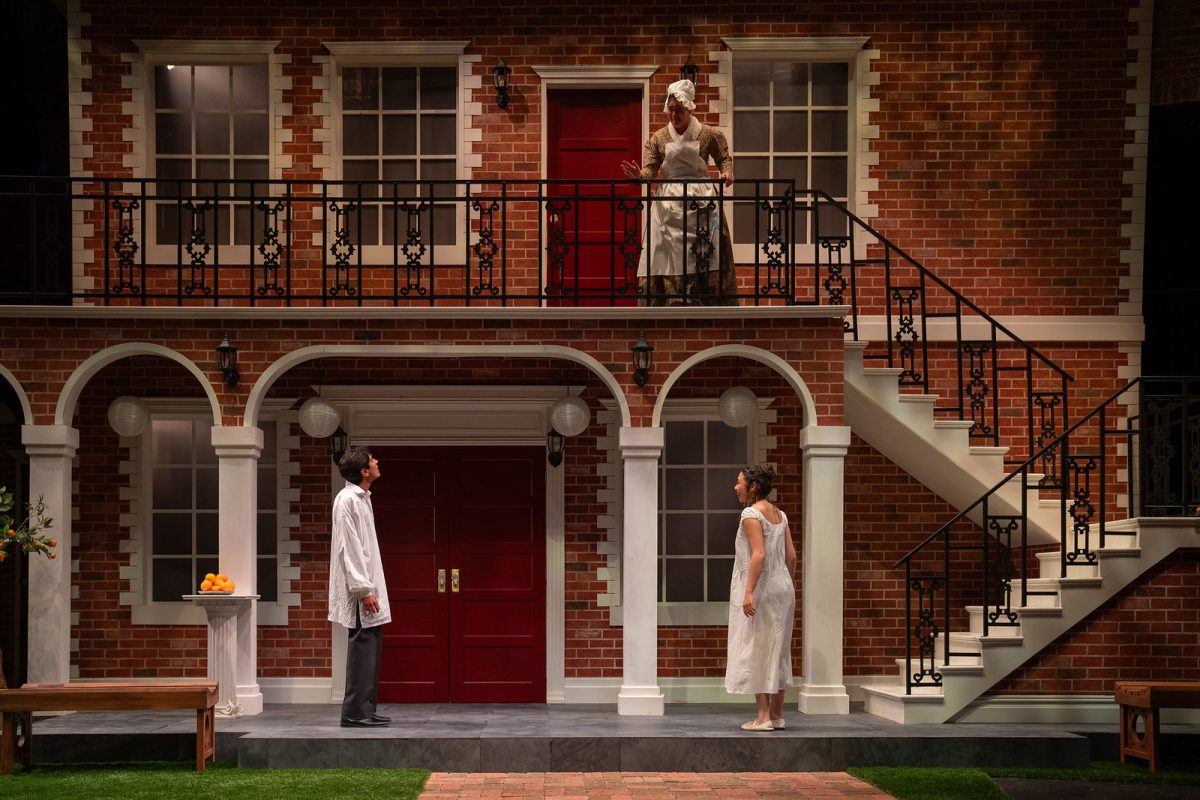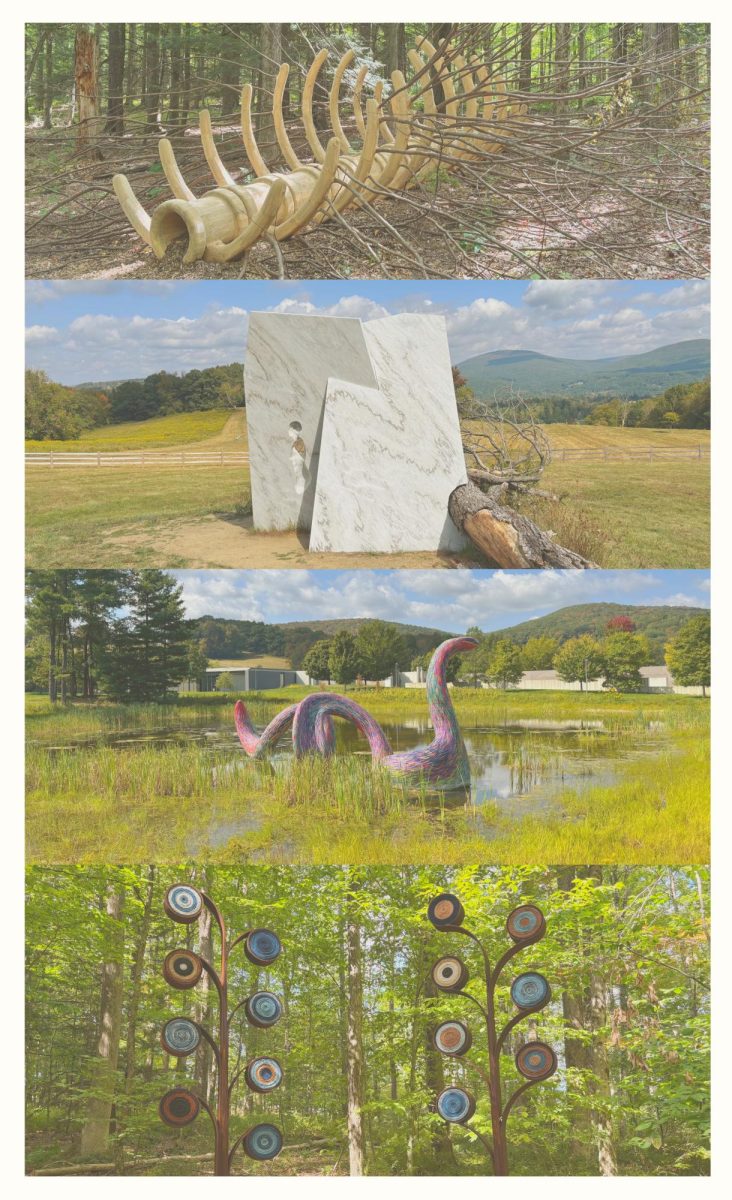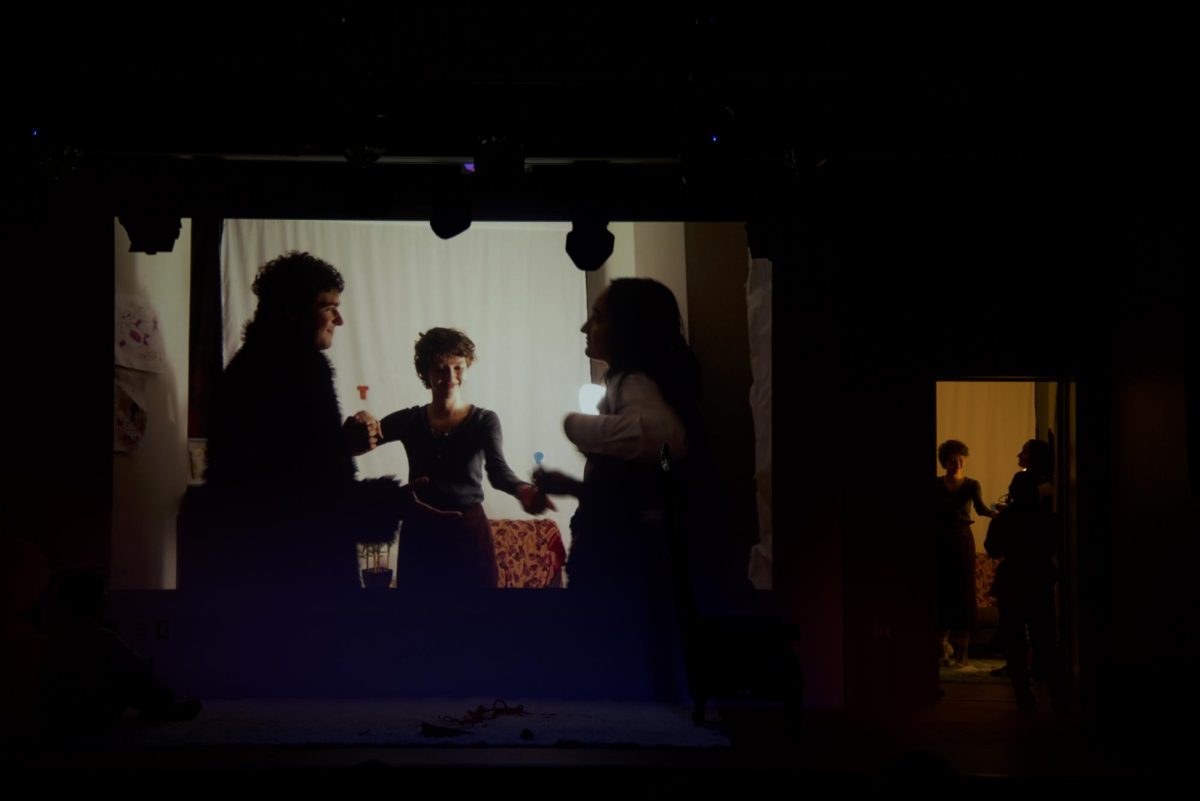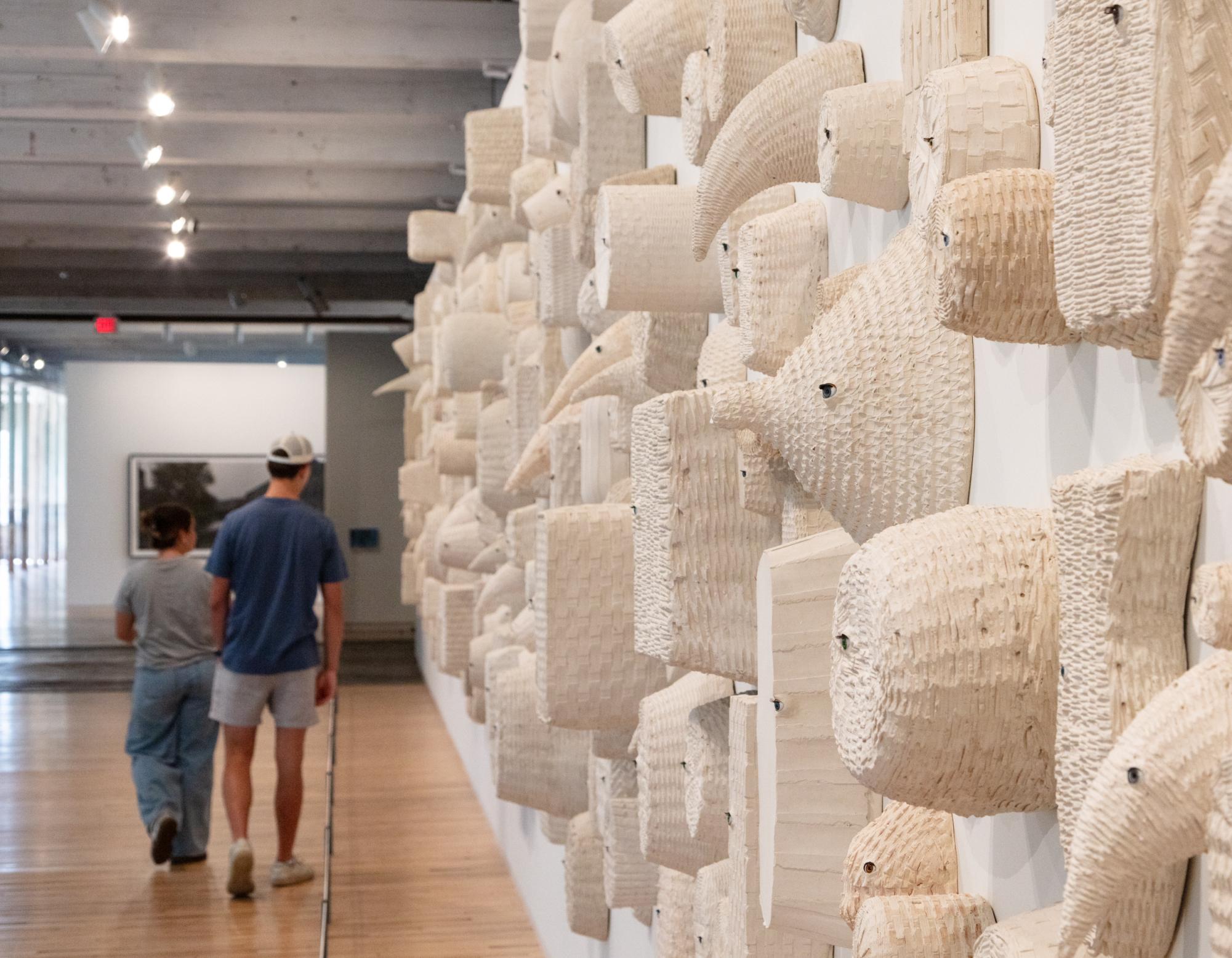
Professor of Art Amy Podmore has always been interested in making sense of the world through interactive art that explores the human body, she said. Her latest exhibition at MASS MoCA, titled “Audience,” does just that: It showcases approximately 400 plaster cast sculptures made of wicker baskets and cornucopias, each with a motorized blinking eyeball. The exhibition, which opened on Aug. 3, invokes “concepts of the gaze” and considers the “psychological uncanniness of the everyday,” according to MASS MoCA’s website.
Though this is Podmore’s third time displaying “Audience,” it contains about four times more castings than previous iterations. Upon seeing the display wall at MASS MoCA, Podmore knew she needed to create more sculptures to fill the space. “I really love the wall there, because it allows you to enter from different directions,” she said. “I was really excited about that.”
Podmore began working on “Audience” in 2016. The process that followed was slow and non-linear, she said. She explored several variations of the basket sculpture before choosing a final version: a plaster cast of a woven basket embedded with a motorized glass eye.
To produce the casts on display, Podmore purchased second-hand baskets. She then coated them with a few layers of industrial plaster and sisal fiber. Once the plaster hardened, she removed the basket.
This process left behind a unique image of each basket in the plaster cast, as well as remnants of the original fibers from the baskets.
Podmore said she thought that the basket sculptures resembled faces, so she decided to add an eye to them — but not two, as to avoid making her creation look too similar to a standard mask.
“We’re not necessarily — any of us — 100 percent complete,” Podmore said, referencing the decision to give each mold only a single eye. But together, she added, the pieces form a communal dialogue with each other.
“I like to think of the eyes blinking as moments of connection amongst all the many missed moments that we have when we’re trying to communicate,” she said.
Meghan Clare Considine, who curated the exhibit, elaborated on Podmore’s engagement with these themes. “She’s very invested in this line between stillness and motion and sculpture, and the kind of uncanniness of not quite catching the blinking eye — not quite knowing who is looking at you,” she said.
The plaster casts are also intended to pay respect to the practice of basket-making and its cultural connotations. “The piece is an honoring of domestic labor — of the skill of basketry — a skill that’s often passed down through matriarchal lines,” Considine said.
Perhaps most explicitly in its title, “Audience” raises questions about the relationship between the viewer and art. “I liked the idea that the eyes were watching the viewer back,” Podmore said. “Who is the audience? Who’s looking at who? Who’s communicating with who?”
But this relationship becomes even more complicated, Podmore noted, through the viewer’s identification with the anthropomorphic elements of the sculpture.
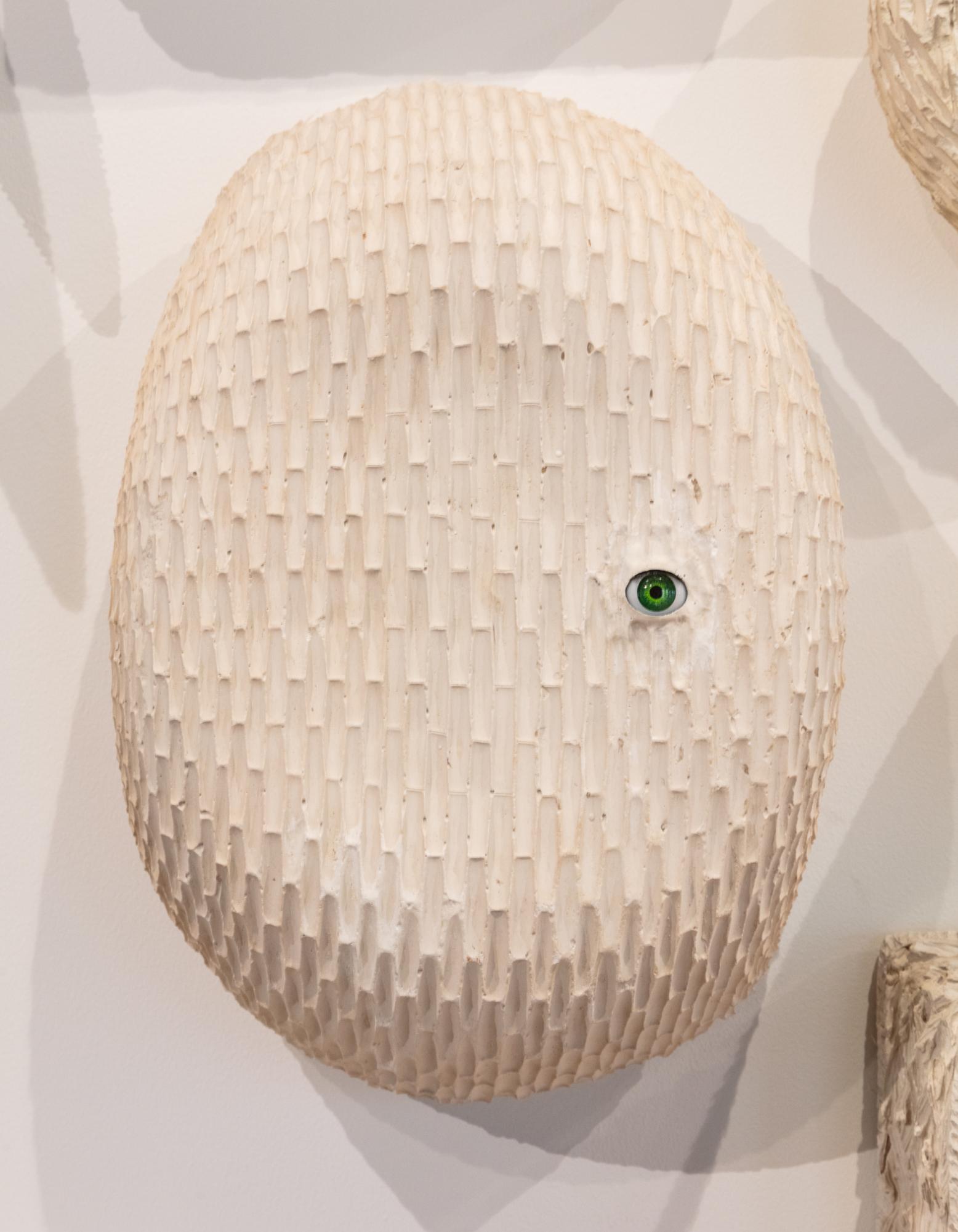
“It can be weird and uncomfortable for people to look at something so familiar as the human form, something that they recognize themselves in,” she said. “It’s not alive or living like we are, but it is this representation of us, and it might last longer than we do.”
Rebecca Gross ’25, who worked as a curatorial intern at MASS MoCA this past summer, said she and the other interns saw themselves in the pieces. “A fun game that we started playing was, ‘Which mask are you?’” she said. “They’re all very different, and they have a lot of personality.”
Gross, as well as Podmore’s studio assistant Annie Scott ’25, helped install “Audience” at MASS MoCA over the summer, which further blurred the line between observer and artwork for them.
“That experience of actually holding this sculptural object changed my relationship to the work,” Gross said. The experience inspired Gross to include physical touch in a tour she wrote and led at the museum, which showed museum goers through “Audience” and two other exhibits. Gross passed around one of Podmore’s unmounted masks, inviting the public to directly interact with the artwork.
To accompany “Audience,” Considine put together a catalog of Podmore’s work, which she said attempts to situate the artist’s latest exhibit as a “culmination of decades of investigation into this question of stillness and motion and the presence of sculpture.” The catalog and other information on the exhibition are available for purchase at MASS MoCA’s research and development store.
Despite the installation’s surreality, Considine said, she has also found joy in its light-hearted nature. “Working on this piece reminded me of the kind of delight that being in a museum can inspire,” she said.
“Audience” will be on display at MASS MoCA through November 2025.



